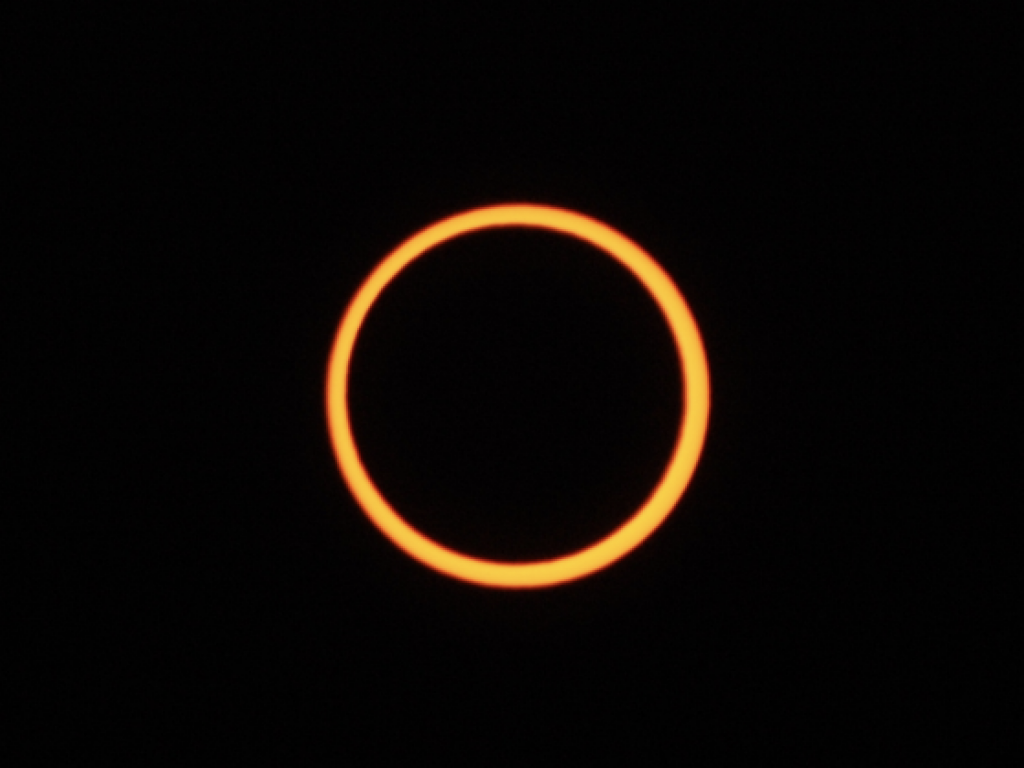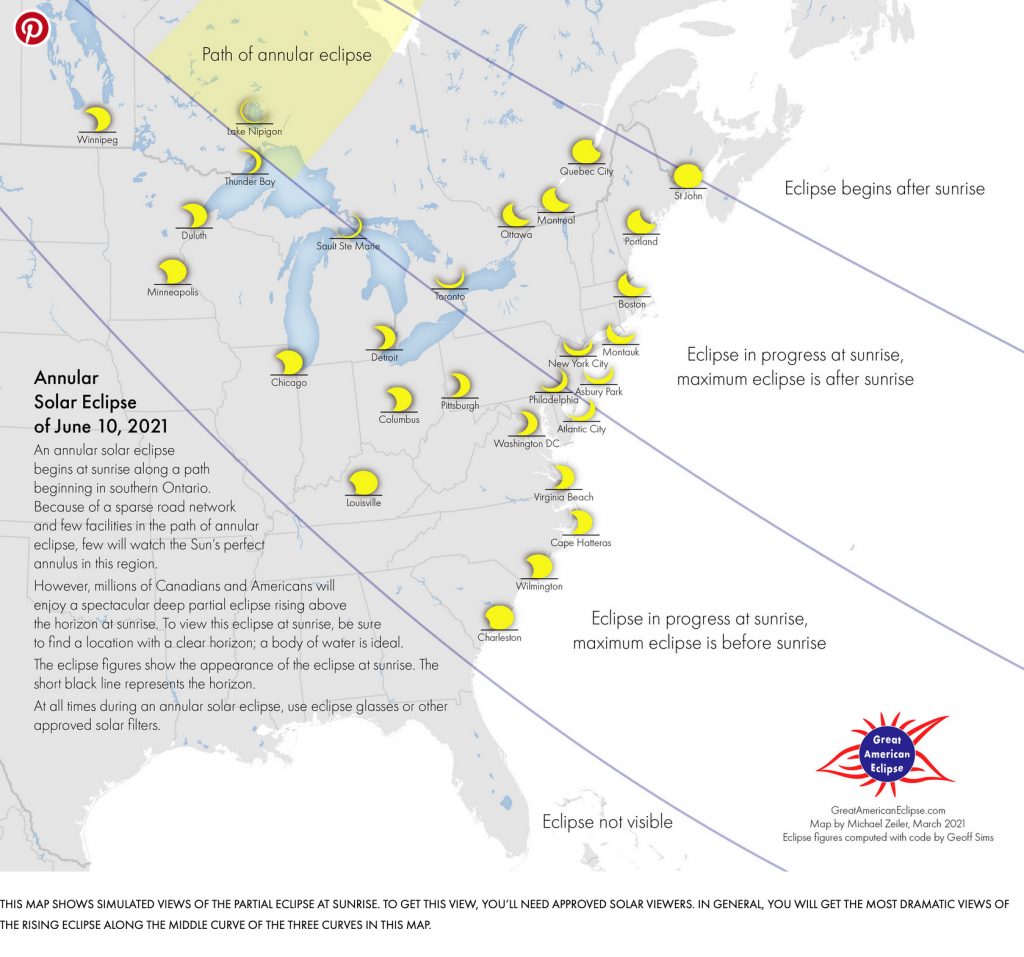Annular/Partial Solar Eclipse, June 10, 2021
On Thursday, June 10, there will be an “annular” eclipse of the Sun visible from parts of Canada, Greenland, and (going over the North Pole!) finally Russia (Siberia). The Moon will be directly between Earth and the Sun, but it won’t completely block the Sun’s bright disk as it does in a total solar eclipse. That’s because the Moon will be more distant from Earth than average in its elliptical orbit, and (this is a smaller effect) Earth will be more distant from the Sun than average in its elliptical orbit, so the Moon will look a little smaller than the Sun. People located in the right places (located along a narrow swath of Earth’s surface) will see the Sun appear as an “annulus” — sometimes referred to as a “ring of fire.” This is a special case of a partial solar eclipse, and it’s nowhere near as fabulous as a *total* solar eclipse, but it’s fun to view nonetheless. See the attached photo of a previous annular solar eclipse.
Over a much broader part of Earth’s surface, a more “normal” partial solar eclipse will occur. For people in the northeastern United States, the partial eclipse will already be in progress at sunrise, ending not long thereafter. Try to see it, if you can. (However, you’ll still need to put a *total* solar eclipse on your “bucket list.” There will be one in the United States on April 8, 2024 — I’ll write more about this later, but mark the date on your calendars now!)
To view a partial solar eclipse, you MUST have the right eye protection. For more information, see https://eclipse.aas.org/eye-safety and also https://eclipse.aas.org/eye-safety/iso-certification. Look through green Shade 14 welder’s glass, or through special eclipse glasses (“CE certified”) sold by a reputable vendor such as Rainbow Symphony; see https://eclipse.aas.org/resources/solar-filters for an extensive list of options. The filter *must* block 99.999% of the Sun’s visible light and 100% of the Sun’s ultraviolet and infrared light, or your eyes could be very seriously damaged (even blindness is possible). Regular sunglasses (even polarized ones) are NOT suitable at all, and neither is smoked glass or an exposed/developed film negative. If you use binoculars or a telescope, a proper filter *must* be placed at the front end of the device (closest to the Sun). Please be VERY careful when observing the Sun!
You can also use the pinhole camera technique, which is much safer: punch a hole (roughly the width of a pencil is a reasonable size) in a sheet of cardboard and look at the image of the Sun projected onto a shaded region below the cardboard. If you use a collander or other object having lots of holes (such as a straw hat), you’ll get many images of the partially eclipsed Sun. Holes between the leaves of a tree can act like pinhole cameras and produce many Sun images on the ground.
For more information about this solar eclipse, see the really excellent and thorough website https://www.greatamericaneclipse.com/2021-june-10. You can also check out https://www.timeanddate.com/eclipse/solar/2021-june-10 ; it provides a detailed map, and you can determine whether the eclipse will be visible from your specific location: https://www.timeanddate.com/eclipse/map/2021-june-10. Another useful website is https://earthsky.org/tonight/annular-solar-eclipse-on-june-10-2021/.
I attach a detailed map made by Michael Zeiler, available at https://www.greatamericaneclipse.com/2021-june-10. It shows the fraction of the Sun’s disk covered by the Moon at maximum eclipse and the Sun’s orientation relative to the horizon, as seen from southeastern Canada and the eastern/northeastern U.S. Views of the Sun rising above the horizon should be very pretty, looking like “horns” or a “shark fin” depending on your specific location. There will be outstanding opportunities for photography!
Note that this solar eclipse follows just 2 weeks after the May 26, 2021 total lunar eclipse. If you didn’t see it, I encourage you to view the recording obtained at the Chabot Space and Science Center (in the hills of Oakland, CA): https://www.youtube.com/watch?v=4bhus6UBPcg. Be aware that the video is 4 hours long, and the first 15 minutes is just the “Starting Soon” slide. You don’t start noticing any significant change in the Moon’s appearance until about 45 minutes into the video. If you wish, you can fast-forward about 2 hours 50 minutes, to the time when totality was taking place (4:11-4:26 am PDT).
Happy (and safe) viewing, if you’re lucky enough to be in the right part of the world!
Alex


